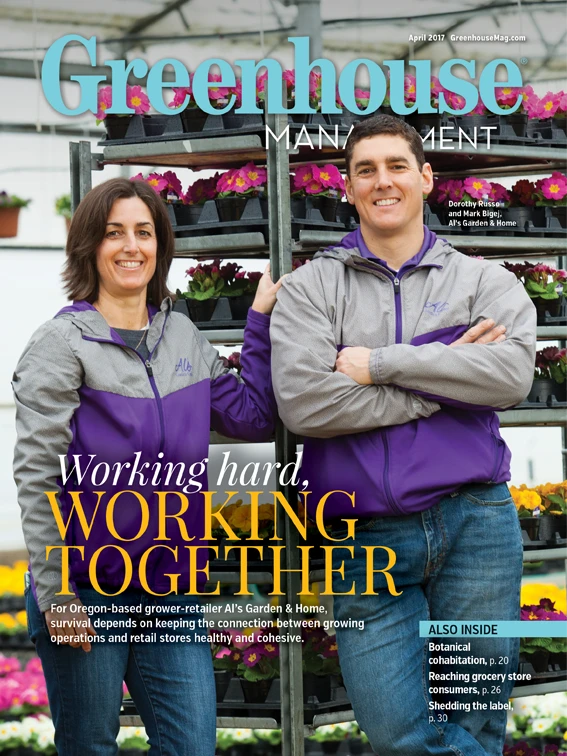
The Florida Aquarium Center for Conservation calls its greenhouses ‘arks’ for a specific reason.
“We refer to our greenhouses as coral arks because they are a living genetic repository for coral colonies and diverse genotypes, many of which no longer exist in the wild,” says Scott Graves, Director of The Florida Aquarium Center for Conservation in Tampa Bay, Florida.
Researchers are growing the coral species staghorn, which could then regrow reefs that have declined over the years. According to Graves, 35 to 40 percent of the world’s reefs have died in the past several decades.
“These genotypes can be cared for here and serve many functions," Graves says. He says those functions include replanting coral, research for how to best restore coral reefs in the wild and cultivating genetically diverse coral colonies more likely to survive in the ocean.
Graves also says coral is “vital” to the aquatic food chain. While reefs only cover two percent of the planet, they support 25 percent of all fish and marine life. Reefs are the world’s second-largest source of biodiversity — tropical rainforests are No. 1 — and buffer coastlines from storm surge and destructive waves.
An important cause

While the idea of growing coral in greenhouses has been around for decades, it’s relatively new to Florida.
The Florida Aquarium has grown coral since the mid-2000s. Currently, there are only two greenhouses dedicated to growing coral. But a third is being built in Tampa Bay and the plan is for one more to be built each year until there are eight in total.
He also notes that growing coral and growing plants are more similar than one might think.
“Most typical greenhouses are used to grow plants, which need warmth and sunlight,” he says. “However, greenhouses work well for corals because they also need a stable temperature and sunlight. Corals are animals that have a symbiont called Zooxanthelle, which is a photosynthetic algae. This symbiont provides food for the coral, and not unlike plants, requires sunlight.”
A helpful partner
Graves’ team has worked with their counterparts from the National Aquarium of Cuba in Havana on reef restoration. Some aspects of the Cubans’ research — most notably water sources, lower funding and growing in an open structure due to Havana’s warm winters — are different than what the aquarium team is working with. But the two groups are working together to solve an issue they both face.

The two sides can work together in part due to relations between America and Cuba improving in 2012 after decades of tension. Before a 2014 agreement that allowed travel between the two countries, this type of partnership wouldn’t have been possible.
Three Cuban scientists worked in the U.S. in 2016 after attending a staghorn coral spawn event at an underwater coral nursery in Key Largo, Florida. There, the two sides exchanged techniques for collecting, fertilizing and rearing the coral.
It’s a partnership Graves sees continuing in the future on this project and others.
“There will definitely be further collaboration in the future as we’re planning to have them join us again this summer to work on coral research and propagation techniques,” he says. “And we are traveling to Cuba this month to assist the National Aquarium of Cuba with building and installing an offshore coral nursery, as well as consult with them on considerations for their land-based coral ark.”
More work to do
According to Graves, the work he and his team have done has been “critically important” to restoring Florida’s reefs. But he says that the aquarium’s reefs will not entirely solve the problem. The average person, he says, can help by eating sustainable seafood, educating themselves on environmental issues and using less water to create less runoff that hurts reefs. He also hopes universities, government agencies and others can come together to work on solving this problem.
“The loss of coral reefs will have a huge ripple effect throughout ocean ecosystems and even onto land environments, habitats and humans, the result of which is not entirely known,” Graves says.

Explore the April 2017 Issue
Check out more from this issue and find your next story to read.
Latest from Greenhouse Management
- 2025 Proven Winners Horticulture Scholarship applications now open
- How to improve inventory and shipping management in the greenhouse
- Leading Women of Horticulture: Anna Ball, Ball Hort, and Terri McEnaney, Bailey Nurseries
- GM CEA HERB Part 2: A guide to increasing the sowing density of culinary herbs
- GM CEA HERB Part 1: Best practices for producing culinary herbs in controlled environments
- USDA fires experts on invasive pests, including Asian citrus psyllid, chilli thrips
- CEA Alliance celebrates bipartisan introduction of Supporting Innovation in Agriculture Act
- Dümmen Orange North America celebrating 25th anniversary in 2025








